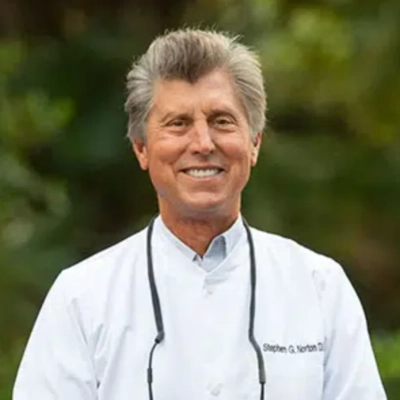7 Services Dentists Should Offer to Improve Patient Care
Discover the cutting-edge services that can revolutionize dental practices and elevate patient care. Drawing from expert insights, this article explores seven key areas where dentists can enhance their offerings and patient experience. From advanced screening techniques to personalized follow-up care, these strategies promise to transform the way dental professionals approach patient treatment and satisfaction.
- Screen for Airway-Related Conditions
- Offer Comprehensive Treatment in One Location
- Provide Clear Communication and Prevention Focus
- Implement Digital Smile Design Mockups
- Deliver Personalized Follow-Up Care
- Send Pre-Appointment Video Introductions
- Integrate Point-of-Care Medication Dispensing
Screen for Airway-Related Conditions
More dentists should screen patients for airway-related conditions such as sleep-disordered breathing and obstructive sleep apnea. These problems first appear in the mouth: grinding, worn teeth, scalloped tongues, and dry mouth. Dentists see these signs daily, yet most don't relate them to troubled sleep or long-term health effects. Early detection and successful therapy are the result of a simple screening process of questionnaires and home sleep tests.
In my office, patients who battled fatigue, clenching, and snoring found help in oral appliance therapy. They can benefit from custom-fit appliances that shift the jaw at night to facilitate better airflow. Many patients get more rest, feel fewer headaches, and experience less tooth wear within weeks. It's one of the quickest ways to enhance a person's general health through dentistry.
Salivary diagnostics is another service that more dentists should provide. Saliva testing for high-risk bacteria allows for tailored gum disease treatment. Rather than speculating, we can pinpoint the precise bacterial profile and track changes over time. Patients get quicker results and improved long-term stability.
Dentistry needs to evolve beyond drilling and cleaning. The mouth provides initial indicators of deeper health problems. Not addressing them is a failure to provide patients with the opportunity to prevent years of suffering. More dentists need to broaden their services to reflect how seriously oral health affects the body.

Offer Comprehensive Treatment in One Location
More dentists should offer comprehensive treatment in one location. Too many patients are going to different offices for scans, surgery, and follow-ups. This causes delays, confusion, and additional costs. People want quick, clear answers. They desire real progress without going through numerous steps to achieve it. When all services are provided under one roof, patients feel more confident and obtain better results.
This isn't about adding more services. It's about eliminating what slows things down. A streamlined process means fewer appointments, less waiting, and improved outcomes. Teams work more effectively when everything is done in one place. Patients feel more assured when they see progress without delays.
Dentists need to ask themselves: Are we simplifying or complicating things? The goal should be to address the problem as directly as possible. That's what patients expect. That's what builds trust.

Provide Clear Communication and Prevention Focus
More dentists need to offer clearer communication. Many patients leave appointments without fully understanding what was done or why. This creates confusion and weakens trust. Providing direct explanations and showing what's happening in the mouth helps people stay involved in their care. It keeps things simple, honest, and effective. Visuals and clear talk always work better than technical terms and rushed advice.
Another improvement would be a stronger focus on prevention. Not surface-level tips, but practical guidance people can use every day. When dentists take the time to explain how habits impact long-term health, results improve. People avoid problems when they understand what to do. Simple advice during visits helps prevent emergencies and keeps things on track.
Good care means taking time and focusing on what's important. Every patient needs clear steps they can follow. This kind of attention builds stronger relationships and stronger practices.
Implement Digital Smile Design Mockups
One of the most powerful tools in cosmetic dentistry today is the trial mockup or Digital Smile Design (DSD). It's not just a fancy add-on—it's the foundation of any predictable, personalized smile makeover.
Patients often come in with questions like:
"How will my smile look after treatment?"
"Will it suit my face?"
"Will it look too artificial?"
That's exactly what a mockup answers—before the actual work begins.
Visual Clarity for the Patient
A mockup helps patients see their future smile in advance—either digitally on screen or physically in their mouth using temporary material.
This immediately builds confidence, clarity, and emotional connection to the treatment.
Predictable Planning for the Dentist
DSD is not guesswork. It's based on facial proportions, lip dynamics, smile curve, and even the patient's personality.
It offers a clear aesthetic direction, which makes treatment planning much more precise—whether we're working on veneers, crowns, or full-mouth corrections.
Real-Time Feedback
With a mockup, patients can offer inputs:
"A bit shorter,"
"Can we keep it more natural-looking?"
"I don't want a square look."
This feedback loop ensures the final smile truly reflects their expectations and comfort.
Prevents Treatment Regret
Mockups help avoid post-treatment disappointment. Patients get a preview of the end result and make informed decisions—before any permanent step is taken.
It removes the risk of overdoing or underdelivering.
Documented Transformation
Each stage—from initial to mockup to final—is documented through clinical photographs.
This helps in treatment monitoring, records, presentations, and most importantly—patient satisfaction. A smile transformation becomes a well-planned journey, not a guessing game.
Before starting any smile correction, a mockup or DSD is a must. It's how both the patient and dentist stay aligned, confident, and excited throughout the process.
When you can preview a smile, you can perfect it.
Deliver Personalized Follow-Up Care
One thing I wish more dentists offered is personalized follow-up care, especially after major procedures like implants or root canals. I recently had a procedure done, and while the initial care was great, I didn't receive much guidance on recovery beyond basic instructions. It would have made a huge difference if my dentist had checked in a week or two later to ensure everything was healing properly or to answer any lingering questions. Offering this kind of proactive follow-up, whether through a quick phone call or a digital check-in, would build trust and show patients that their care extends beyond just the treatment itself. It would also help address concerns early on, preventing complications or unnecessary anxiety. Simple, thoughtful follow-ups could elevate the entire patient experience.

Send Pre-Appointment Video Introductions
As the owner of a luxury helicopter company based in Mexico City, I have learned that trust and emotional peace are everything, especially in a high-stress situation. I wish more dentists would offer optional video calls or "know your doctor" video snippets prior to the scheduled appointment date.
When someone books a helicopter tour with us, it is fair to say that they are nervous. It's not just about flying; it is about feeling safe. We began offering 2-minute WhatsApp videos from the pilot starting with "Hi, I'm Marco, your pilot...," explaining the route and confirming which heliport the flyer would be departing from. This small share of humanity has decreased our last-minute cancellations by 40%.
I believe we could do the same in dentistry. A welcome video saying "Hi, I'm Dr. Garcia, and here is what a cleaning will look like today" would begin to evaporate a lot of anxiety patients walk in with and do not know they are carrying. Not every improvement we make as practitioners needs to be tech-enabled. Sometimes it may be simply giving people a face and a voice before they show up for a chair appointment.
Integrate Point-of-Care Medication Dispensing
Digital dentistry is racing ahead, yet many patients still leave the chair with a paper treatment plan and hope their pharmacy has the right post-procedure medications in stock. Imagine if more practices bundled same-day, pre-packaged analgesics or fluoride rinses right at checkout—no extra stop, no insurance wrangling—mirroring the point-of-care dispensing model clinics use to boost adherence by up to 30 percent.
At A-S Medication Solutions, we outfit medical offices with automated cabinets that barcode-verify every dose, sync to the EHR, and bypass the PBM toll booth, cutting costs while keeping critical inventory onsite. Translating that to dentistry could mean chairside dispensing of peri-operative antibiotics or desensitizing gels with the same barcode precision, so clinicians close the loop before the patient even zips their coat.
Shorter wait times and greater provider control turn a routine cleaning into a concierge-level experience, and patient satisfaction scores skyrocket. When medications, supplies, and documentation all live under one roof, dentists can focus on perfecting smiles instead of chasing callbacks—proof that point-of-care principles shine just as brightly under an operatory light.





